Sarah Benford: The story of the Kettering teen who vanished
and live on Freeview channel 276
It was twenty years ago today that 14-year-old Sarah Benford walked into an amusement arcade in Kettering town centre to see her mum.
The pair argued and Sarah left, telling her mum she'd 'see her tomorrow'.
Advertisement
Hide AdAdvertisement
Hide AdThat was the last time that Vicki Benford saw her little girl.
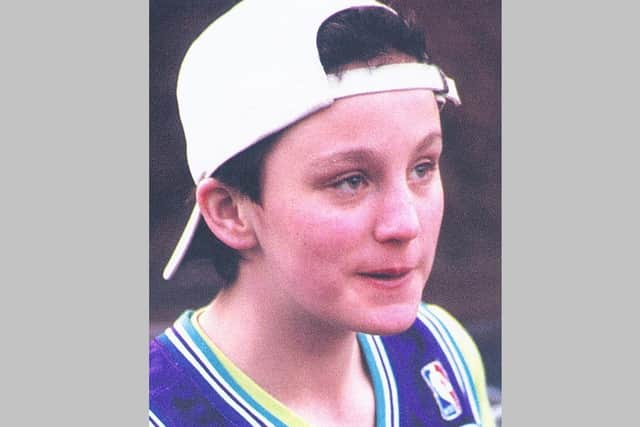

Sarah Benford spent her early years in Havelock Street, in an unremarkable red-bricked terrace similar to the homes of thousands of children growing up in Kettering in the 1990s.
She lived with her mum Vicki, her stepdad Gavin, her brother Josh and sister Anya.
But it was at the age of just two, when she first appeared on the radar of social services, that her life had already begun to go awry.
Advertisement
Hide AdAdvertisement
Hide AdSarah started skipping school in reception and was already absconding from home aged just eight. She started at Montagu School aged 11 and was described as a 'confident, bubbly girl.'
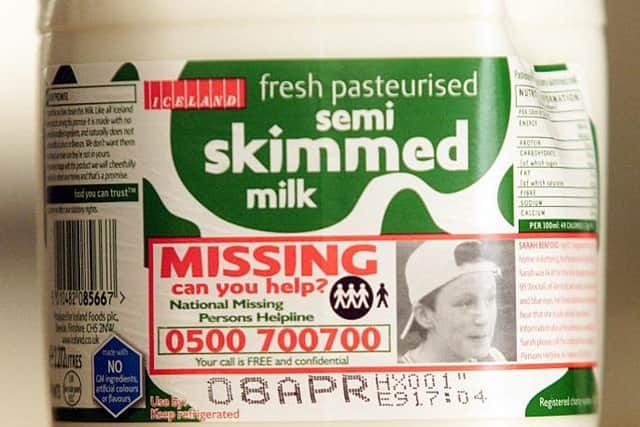

But by the time she turned 14 she'd been in three different children's homes, had started to use heroin, cocaine and speed, sniffed aerosols and had begun to self-harm. She was a regular runaway.
Her mum Vicki had agreed with her going into care because she wanted her to get away from the petty thieves in Kettering who had sent her out to steal to feed their drug habits.
Those investigating her disappearance, those charged with her care, and the media, said Sarah had turned to prostitution and intimated she was a troubled teen who had chosen to run away, to mingle with the wrong crowds and to take hard drugs.
Advertisement
Hide AdAdvertisement
Hide AdIf Sarah had gone missing today, enlightened by knowledge gleaned from years of high-profile child sexual exploitation and a paradigm shift in the way society views the grooming of children, babyfaced Sarah would be been seen for what she was: a victim of sexual crimes by older men who wanted to exploit her, a victim of those who served their own interests by supplying drugs to her and a victim of many of those charged with her care who repeatedly failed her.
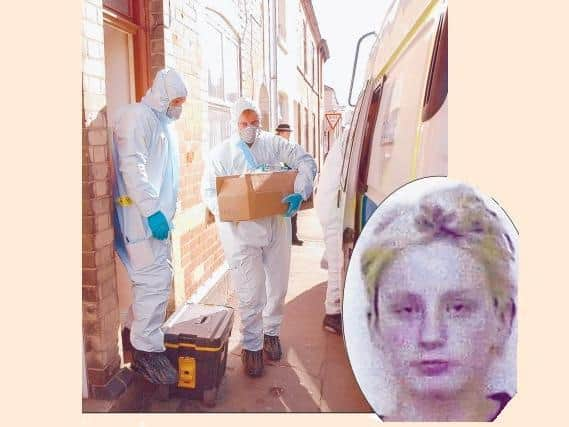

Long before she had gone missing the authorities would be asking what had gone so terribly wrong in Sarah's life that had led her down this catastrophic path. What had so affected her that she had spent 41 of her 150 days in care missing? And where was she sleeping on the nights she spent away from her care home?
There would be questions asked, investigations launched and arrests made.
But back in 2000, so unconcerned were police officers about Sarah's multiple runaway attempts that on the day she disappeared, they refused to collect her from a house in Kettering despite pleas from her desperate mum.
Advertisement
Hide AdAdvertisement
Hide AdThe publicity surrounding her disappearance was in stark contrast to the acres of coverage given over to bright Sussex teen Milly Dowler in 2002 - who disappeared and was later tragically found murdered. Outside of Kettering, the name Sarah Benford is barely known.
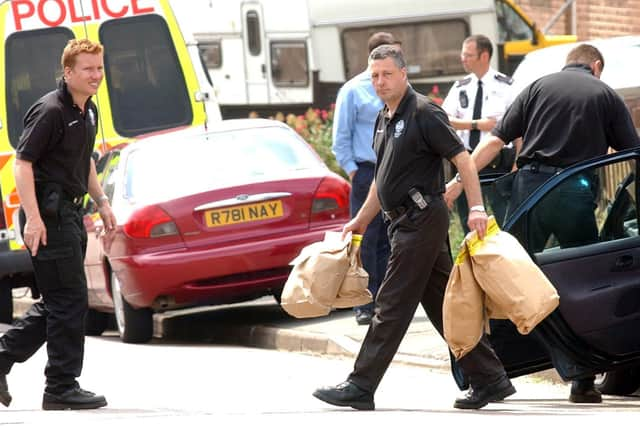

In 2008, Sarah's angry uncle Steve Cross from Corby told the Independent newspaper: "[The police] didn't treat it seriously enough at the beginning.
"Sarah was just another statistic to social services and the police, and to start with they didn't care. Then with pressure from the family through the media they thought, 'we'd better do something about this because it isn't going to go away'.
"There is a culture of secrecy when kids from care homes go missing."
Advertisement
Hide AdAdvertisement
Hide AdSarah had been in care for just a few short months before she went missing for the final, fatal time.
She'd gone to live at her first care home in September 1999, after the death of her beloved Uncle Andy.
Unable to cope with his death, she started hanging around with older people in Kettering and taking drugs. She spent time in Raven House Children's Home in Corby, then in an isolated secure unit then run by Northamptonshire County Council called St John's in Tiffield - described later by another former resident as 'a placement for anyone for whom there was nowhere else to go'.
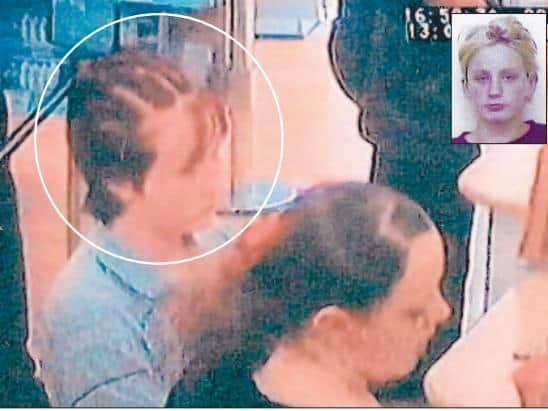

Sarah was moved to Welford House children's home in Northampton. While there, and aged just thirteen, she self-harmed, admitted meeting boys in Abington Park for sex and revealed to staff she was injecting herself with heroin. When she told staff about the boys she was having sex with, they merely reminded her to use contraception. A doctor who she saw at hospital after she had taken heroin said he could 'find nothing wrong.'
Advertisement
Hide AdAdvertisement
Hide AdLater, her mum would say that Sarah was desperate to get out of the home, describing it as a 'holiday camp' that let her come and go as she pleased.
On March 31, 2000, Sarah left the unit and was reported missing. When she was found on April 2, staff notes said she had 'admitted having sex with men.' It is not known if a police report was ever made about Sarah's claim. She was just a child and unable to give full consent to these men.
Just a day later, on April 3, Sarah again walked out of the home and staff reported her missing. On April 6 she visited her mum where she worked in an amusement arcade in Kettering town centre. They argued. That was to be the final time Vicki saw her daughter,.
Later that day Sarah phoned her mum from a house in Hampden Crescent, Kettering. She was high on drugs.
Advertisement
Hide AdAdvertisement
Hide AdA frantic Vicki phoned police and begged them to collect her and take her back to the care home. They refused, not for the first time. She had already been officially missing for three days.
Documents later handed to this newspaper said police officers had told care home staff they 'could not and would not' collect her and would not 'take her to Kettering Police Station to babysit her'.
That catastrophic decision has led to Northamptonshire Police's biggest ever missing persons enquiry lasting twenty years. There have been 5,000 lines of enquiry, 663 statements taken, 918 reports collated and eight arrests but, crucially, no charges.
There were some sightings in the days following her disappearance in Cherry Road and Highfield Road but there the trail goes cold.
Advertisement
Hide AdAdvertisement
Hide AdInvestigations at the time suggested she had travelled to Finchley, London where more people were waiting to sexually exploit her. But no trace of her was ever found there.
On May 12, her grandmother June Black of Ribblesdale Avenue in Corby phoned reporters at the Evening Telegraph. She was frustrated at the attempts to find Sarah so appealed herself for her grandaughter's safe return. A £500 reward was later offered. June became instrumental in keeping up the pressure on the authorities to find Sarah until her death in late 2003 just after the murder investigation was launched.
The day Sarah went missing she was wearing the uniform of 1990s teens: A black puffa jacket, blue patchwork jeans and cream trainers.
Her devastated mum pounded the streets and parks of Kettering looking for her for weeks.
Advertisement
Hide AdAdvertisement
Hide AdFour months after she was last seen, in August 2000, workers at Service Six in Wellingborough said Sarah was brought in twice with a pimp and a known prostitute for a pregnancy test. Service Six bosses reported that sighting to poloce.
Officers later said they believed there had been confirmed sightings of her until April 19, but that there was little evidence she as alive more than two or three months after her disappearance.
Sarah's face appeared on milk cartons and on the sides of lorries, there were TV appeals and media campaigns. There were 200 sightings that had no positive outcome.
There was hope that a girl seen at the Supervision shop in Silver Street in May 2003 was Sarah, but that was later discounted by police.
Advertisement
Hide AdAdvertisement
Hide AdThree long and agonising years went by for her heartbroken family.
Derbyshire Police were tasked with looking at the shortfalls in Northamptonshire Police's investigation. Their report was never made public.
In May 2003 Northamptonshire County Council, perhaps aware of their own shortcomings in Sarah's care, launched an independent enquiry into the police's handling of the case. Headed up by University of Northampton lecturer and solicitor Margaret Roberts, police refused to co-operate, saying it was not in the remit of NCC to investigate the police. The enquiry was later dropped.
But this, perhaps, was a catalyst for the force to ramp up their investigation.
Advertisement
Hide AdAdvertisement
Hide AdRichard Jenkins had moved to South Wales from Kettering 18 months after Sarah's disappearance.
His daughter Jessica had been friends with Sarah and she had been to his house several times in the year before she went missing, staying over for a couple of nights.
In June 2003, police began a painstaking search of his former family home in Highfield Road. They thought he had questions to answer. One of the places Sarah was last seen on the day she went missing was Highfield Road.
Detectives then moved on to his new house in Maesteg, South Wales where they dug up his garden to look for clues about Sarah's disappearance.
Advertisement
Hide AdAdvertisement
Hide AdDisgusted, in July 2003, Mr Jenkins contacted Evening Telegraph reporters and told them that he had nothing to do with the case, that he didn't think Sarah was dead and that he had no idea where she was. A reporter travelled to Wales to meet him.
There, in his front room, he said: “Neither myself nor any of my daughters have seen Sarah since she went missing and I just can’t understand why they are looking at my house here or in Kettering.
“All this has really upset my youngest daughter especially as she thinks I’ve been accused of killing somebody, as does everyone who saw my garden being dug up.
""What am I supposed to have done – killed Sarah, buried her, then dug her up again two years later and moved her to South Wales?"
Advertisement
Hide AdAdvertisement
Hide AdIn July 2003 he was arrested by police and taken in for questioning. He later told our reporters that the investigation had ruined his life. He was eventually eliminated from the inquiry.
Two more people from Kettering, a man aged 29 and a woman aged 37 were arrested on suspicion of supplying drugs to Sarah.
Three houses including one in Windmill Avenue were searched. Officers visited Hackney to conduct property searches there.
Finally, on September 23 2003, police said they had no more hope that Sarah was alive and upgraded their enquiry to a murder investigation.
Advertisement
Hide AdAdvertisement
Hide AdIt was the news Sarah's family had been dreading, but for them the news did not exuinguish their hope that the youngster was still alive.
DCI Charles Moffatt said: "There is little evidence of Sarah surviving beyond two or three months after she went missing."
Searches resumed in earnest. Houses in Highfield Road and Nelson street were searched and more arrests were made.
A man aged 54 from Kettering, and a 43-year-old man and a 38-year-old woman from London were arrested on suspicion of murder. They were later released and no charges were laid. Then a woman aged 41 from Kettering was arrested on suspicion of murder. She was also later released. A woman aged 46 from London was arrested on suspicion of perverting the course of justice.
Advertisement
Hide AdAdvertisement
Hide AdThe independent inquiry was dropped to be replaced by a serious case review by the Area Child Protection Committee.
By December the searches had moved to Weekley Woods near Kettering and Wakerley Woods on the border of Rutland and East Northamptonshire. Those searches turned up nothing of interest.
Then, officers launched their highest-profile search yet. They moved on to a piece of wasteland occupied by an elderly Polish man - who was not implicated in the investigation - at remote Finedon Sidings near to the Furnace Lane Industrial Estate. Archaeologists were joined by cadaver dogs from Scotland and Greater Manchester working alongside forensic officers.
The site was said to be 'significant' in Sarah's life. Officers took away nine rundown caravans, six wrecked cars and bags and bags of junk were taken to a secret warehouse in Northampton to be combed for clues. A gun was found but was not thought to be significant.
Again, their painstaking search proved fruitless.
Advertisement
Hide AdAdvertisement
Hide AdOn his retirement six years later, DCI Moffatt would say the biggest regret of his career was not finding Sarah.
A serious case review that concluded in July 2004 was damning.
It found that NCC had been understaffed, that it missed several chances to identify Sarah as a child at risk and didn't follow proper processes to make sure that she didn't come to harm.
The report said that professionals were operating against a “back cloth of insufficient resources, overloaded systems, huge workloads and a lack of comprehensive procedures."
Advertisement
Hide AdAdvertisement
Hide AdIt said the label of 'troubled adolescent' masked and minimised the risks faced by the 'vulnerable' child.
They concluded that no in-depth assessment of her needs was carried out before she went missing, despite problems with non-attendance of school from the age of five, sexualised behaviour from an early age and suicide attempts.
Its eight recommendations were based around providing training for child protection.
NCC overhauled the way in which it treated children in its care. It made sure there was someone available to pick up runaways 24 hours-a-day and trained its staff in looking out for the signs of abuse.
Advertisement
Hide AdAdvertisement
Hide AdMore social workers were hired and police and care workers vowed to strengthen their links to enable them to work together too look after troubled teens,
Northamptonshire Police have radically overhauled the way in which they deal with missing children. There are now immediate public appeals when youngsters go missing and a specialist team has been set up to divert teens away from becoming involved with drug gangs.
By August 2004 the trail into Sarah’s whereabouts had gone cold and the huge investigation, named Operation Yacht, was scaled back.
Then, in 2006, a concerned member of the public handed over a dossier to a newspaper reporter.
Advertisement
Hide AdAdvertisement
Hide AdIt detailed the thoughts of care workers who looked after Sarah for the final months of her life in Welford House. It proved devastating for Vicki Benford, who tearfully told reporters that she should never have let her daughter go into care.
One harrowing entry shows how Sarah had been told that her estranged biological dad wanted to speak to her - but when carers phoned him on her behalf he said he didn't want anything to do with her.
In one section, there were details of how Sarah was found crying in another resident's room with her wrists slashed. The next day Sarah had been allowed to go for an unsupervised walk in Kingsthorpe. She returned armed with a pen knife
At the time, Vicki said: “It's awful, what were they thinking? The place was like a holiday camp, they were letting her come and go as she pleased. She was meant to be in care.
Advertisement
Hide AdAdvertisement
Hide Ad“Sarah didn't want to be there. They promised her that if she went a month without absconding they would transfer her to Rockingham Dene, where she wanted to be.
“She behaved herself, kept her side of the bargain only to be told she would have to stay where she was.”
Ten years later, in 2016 on what would have been Sarah's 30th, birthday officers revisited woodland at Warkton to try to find clues.
DCI Martin Kinchin from the force's cold case team said that the force had never given up hope of discovering what happened to Sarah.
Advertisement
Hide AdAdvertisement
Hide AdA string of lead detectives over the years have said that are confident they know who killed Sarah, but they need help from the people of Kettering to find the evidence.
DS Julie Gallagher has been working on the investigation for the past seven years and has today appealed for those with knowledge about Sarah's whereabouts to come forward to help Sarah's family finally find some peace.
Sarah was 5ft 7in with blue / grey eyes and a self-made tattoo of a cross on the top of her arm. She would now be 34. If you know anything about Sarah's murder that you think might help the investigation, you can contact the lead detective DS Julie Gallagher directly by phoning Northamptonshire Police on 101.